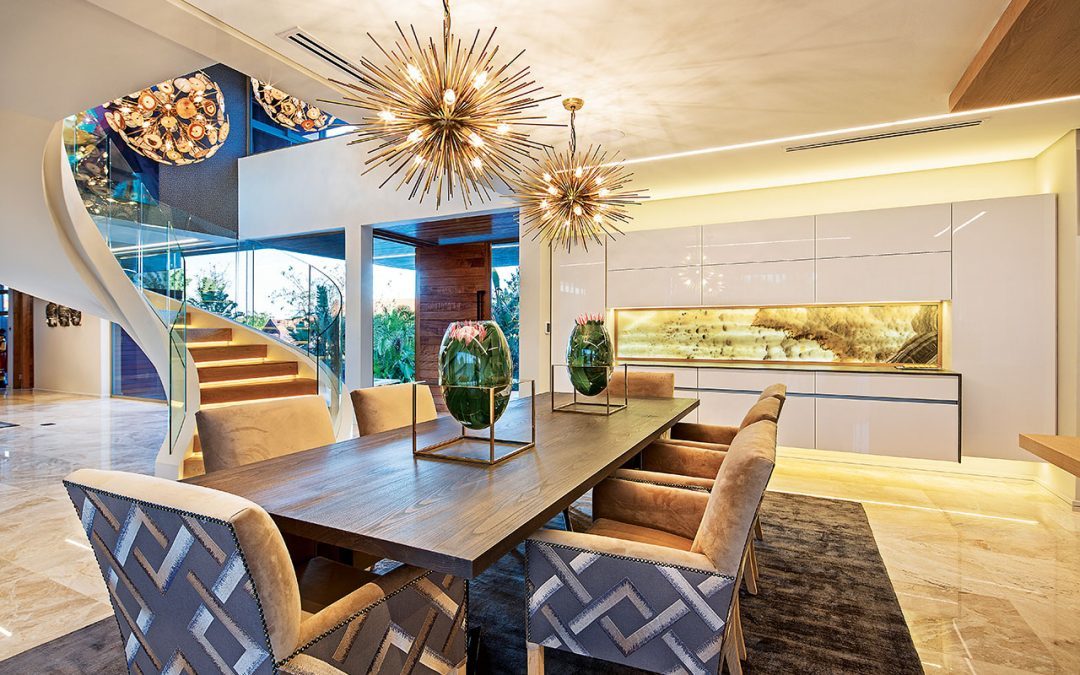In 2020 South Africa the sector that includes contemporary architecture and interior design will surely see progress in both creativity innovation and eco-awareness, albeit largely in the upper reaches of the economy.
‘When I am asked what I believe in, I say that I believe in architecture. Architecture is the mother of the arts. I like to believe that architecture connects the present with the past and the tangible with the intangible.’ – architect Richard Meier.
Indeed, as construction evolves recent R&D and technical advancements are shaping how we design. Such energies result from shared ideas and the convergence of building technologies that open up new possibilities for architecture. From the atomic scale of materials to prefabricated and assembled homes, the changes in BuildTech are being noted across associated industries. IT is key and as a result, disciplines are learning from one another to reimagine how we build.
_____________________________
ARCHITECTURE ’20
Architectural trends for 2020 indicate a common thread – the commitment to sustainable development. Populations globally are evolving towards environmental responsibility as a social manifestation. The use of recyclable materials, buildings that are self-sufficient and installations of all kinds that respect the planet are becoming increasingly vital factors.
Key indicators for 2020:
Multifunction
The commitment to integrate different areas of the home, to create diaphanous and polyvalent environments is ongoing. It’s a solution that allows more space, light and increased practicality. Using materials that co-ordinate areas and encourage spatial flow is key, without walls between areas and delineation via only glass partitions.
The integration of the kitchen and the living room is the most common indicator, together with access to living areas, patios and terraces. This new use of traditional spaces is irrefutable proof of how the concept of a room – and architectural interest in interior areas – has altered and progressed to redefine residential lifestyle.
Minimalism
Minimalism in architecture is a commitment to simple forms using contemporary and avant-garde materials. Inherent is the use of quality materials to ensure thermal and acoustic insulation that will result in economic savings and environmental benefits. What results are innovative concepts and living / working environments offering open, transparent spaces, which are constantly changing and can be adapted at any time to the needs of users.
Industrial
This decades-old yet enduring design direction remains popular. It’s defined by asymmetrical forms in construction, both in residential buildings and in other urban infrastructures. It is characterised by the combination of steel, wood, aluminum and even recycled plastic, which can represent a reduction in construction costs. Simple lines and an absence of surface elements are also characteristic of the industrial style.
_____________________________
Luxury Estates
A key addition to Habitat’s annual ARCHITECTURE ’20 in the January / February 2020 issue will be the showcasing of luxury estates and the benefits they offer.
Estate living is becoming increasingly popular throughout South Africa’s major centres as it offers not only security and convenience, but also luxury living at an attractive price. It’s an avenue well worth exploring. Why?
Community
Homo sapiens is showing an increasing need to belong to a community and South Africa is no exception. Potential buyers yearn for the days of knowing their neighbours by name; along with the convenience of lock-up and go lifestyle. Adding to the sense of community is the inevitable creation of online communities via social media such as Facebook and WhatsApp, where like-minded individuals share issues that concern the collective. It makes sense
Solid Investment
An investment property within a security estate represents a relatively sound investment. There is a general consensus in the real estate sector that prospective buyers wishing to own a house within a walled community will expect to pay up to 30% more, when compared to a freestanding counterpart. This represents a better rental income generator.
Hassle-free Lifestyle
The estate’s body corporate usually handles maintenance with regards to roads, gardens and overall landscaping. They often also provide a style guide, which helps keep individual properties in synch with the look and feel of the estate. Maintenance is usually taken care of with minimal effort via a list of preferred suppliers and contractors.
Amenities
It’s the age of convenience and security estates increasingly provide amenities such as tennis, squash, communal swimming pools, park areas, laundromats and even walking trails. More South Africans are happy to pay for the increased convenience and safety that security estates have to offer.

Security
These estates, come standard with security features such as 24-hour estate security, including boundary fences, guards and manned booms. Such gated communities enjoy the benefit of access control, security patrols and properly maintained walls and fences. It’s worth noting that there’s a marked reduction in the rate of crime in security complexes.
_____________________________
Publication Date
The above subjects will be elaborated on and dynamically illustrated in the upcoming ARCHITECTURE ’20 FOCUS feature in issue 275 of Habitat on-sale in early January 2020.
The comments of informed leading opinions – both South African and international – involved in the discipline of architecture, and the development of luxury security estates, will be included in this annual feature.
_____________________________













